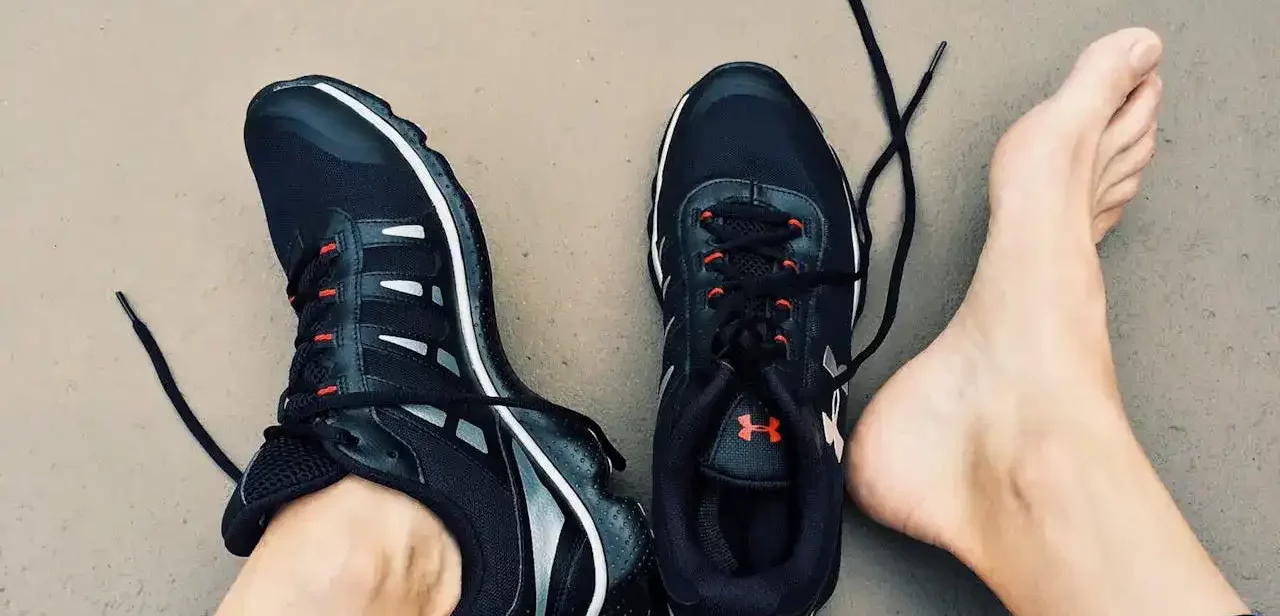The Most Common Reasons for Foot Numbness in Cyclists

In this blog post, we will delve into the most common reasons for foot numbness in cyclists, helping you identify potential causes and take appropriate measures to alleviate the problem.
Table of Contents
What Causes Foot Numbness?
Foot numbness in cyclists can be attributed to various factors, often related to pressure on nerves or restricted blood flow. Some common causes include:
- Poor Bike Fit: Improper bike fit can put pressure on nerves and blood vessels in the feet, leading to numbness. Adjusting saddle height, handlebar position, and cleat placement can help alleviate this issue.
- Pressure Points: Prolonged pressure on specific areas of the foot, such as the ball or the arch, can compress nerves and restrict blood flow, causing numbness. This can be exacerbated by stiff cycling shoes or poorly positioned cleats.
- Shoe Fit and Tightness: Cycling shoes that are too tight or narrow can constrict blood flow and compress nerves, leading to numbness.
- Foot/ Cleat Positioning: Incorrect foot positioning on the pedals can also contribute to numbness. For example, excessive toe pointing or dorsiflexion can increase pressure on the nerves and blood vessels. The placement of the cleats on the cycling shoes can affect pressure distribution and lead to numbness if not properly aligned.
- Overuse or Fatigue: Long rides or repetitive cycling motions can strain the muscles and nerves in the feet, leading to numbness.
- Cold Temperatures: Cycling in cold weather can reduce blood flow to the extremities, increasing the likelihood of numbness in the feet.
- Neurological Issues: In some cases, foot numbness may be a symptom of underlying neurological conditions such as peripheral neuropathy or nerve compression syndromes.
- Excessive Vibration: Rough terrain or poor road conditions can cause vibrations that transmit through the bike and into the feet, potentially leading to numbness over time.
To prevent foot numbness, cyclists should ensure proper bike fit, wear well-fitting and supportive cycling shoes, maintain good foot positioning on the pedals, take regular breaks to stretch and move the feet, and dress appropriately for weather conditions. If numbness persists or is accompanied by other symptoms, it’s essential to consult a healthcare professional for evaluation and treatment.
How Does Cycling Impact the Foot Muscles?
- Muscle Activation: When cycling, the foot muscles contract and relax in response to the downward force applied during the pedal stroke. This process helps transfer power from the legs to the pedals, ensuring efficient energy transfer.
- Strengthening: Cycling primarily engages the muscles in the lower body, including those in the feet. Pedaling requires the activation of muscles in the calves, shins, and feet to push and pull the pedals. Over time, regular cycling can help strengthen these muscles, particularly the calf muscles and those responsible for stabilizing the foot and ankle.
- Muscle Endurance: Cycling is an endurance activity that requires sustained muscle engagement over long periods, improving the endurance of foot muscles, as they are repeatedly activated and engaged throughout the ride. This can improve the endurance capacity of the foot muscles, allowing them to withstand prolonged periods of activity without fatigue.
- Stabilization and Balance: Foot muscles play a vital role in maintaining stability and balance while cycling. They help keep the foot stable on the pedal and contribute to the overall balance of the cyclist. This requires the activation of muscles in the feet and ankles to support the arch and prevent excessive movement.
- Muscle Imbalances: While cycling can strengthen certain muscles in the feet, it may also contribute to muscular imbalances, especially the repetitive cycling motion can lead to certain muscles be overworked while others are underused. It’s important to incorporate cross-training exercises and targeted foot strengthening routines to mitigate this issue. The repetitive motion of pedaling primarily works the muscles on the front and sides of the lower leg, potentially leading to overuse or weakness in other areas, such as the muscles on the inner and outer sides of the foot.
- Risk of Strain: Intense or prolonged cycling sessions can strain the muscles in the feet and lower legs, particularly if the bike fit is incorrect or if the cyclist has biomechanical issues. Overuse injuries such as plantar fasciitis or Achilles tendonitis can occur if the muscles are subjected to excessive stress without adequate rest and recovery.
Overall, cycling can positively impact foot muscles by improving their endurance and strength patterns. However, it’s essential to monitor for potential muscle imbalances and address them accordingly to maintain optimal foot health and cycling performance. Additionally, incorporating off-bike exercises to target neglected muscle groups can help maintain overall foot health and performance.
Signs You Have a Serious Foot Issue
- Persistent Numbness or Tingling: If foot numbness or tingling persists even after adjustments to bike fit, shoe fit, or pedaling technique, it could be a sign of nerve compression or damage. Such numbness, tingling, or loss of sensation in the foot or toes can be a sign of nerve compression or damage, such as peripheral neuropathy or a pinched nerve. These symptoms should be evaluated promptly, especially if they occur suddenly or affect both feet.
- Severe Pain: Sharp, intense, or persistent pain in the foot, especially during or after cycling, may indicate a serious injury or condition such as a stress fracture, tendonitis, or plantar fasciitis. If pain does not improve with rest or over-the-counter pain medications may indicate an underlying issue. Pain that interferes with daily activities or disrupts sleep should be evaluated by a healthcare professional.
- Swelling, Discoloration, or Deformity: Visible swelling, redness, or discoloration of the foot, as well as any noticeable deformities, may be indicative of an injury or infection that requires medical attention. Persistent swelling in the foot or ankle, especially if it is accompanied by pain, warmth, or redness, may indicate inflammation, infection, or other serious conditions such as deep vein thrombosis (DVT) or a fracture.
- Inability to Bear Weight: If you are unable to walk, stand, or put weight on your foot or experience extreme discomfort when doing so, it could be a sign of a serious injury such as a fracture or tendon rupture.
- Visible Deformities: Any visible deformities, such as misaligned toes, bulges, or unusual swelling, should be evaluated by a healthcare professional, as they may indicate underlying structural issues or joint abnormalities.
- Persistent Sores or Wounds: Wounds or sores on the foot that do not heal or show signs of infection, such as increased pain, redness, swelling, or drainage, may indicate poor circulation, diabetes-related complications, or other serious conditions.
- Limited Range of Motion: Difficulty moving or flexing the foot or toes, or stiffness in the joints, may indicate arthritis, tendonitis, or other musculoskeletal issues that require medical attention.
Changes in Skin Color or Texture: Discoloration, redness, or changes in the texture of the skin on the foot, such as blistering, peeling, or thickening, may indicate an infection, circulation problems, or skin disorders such as eczema or psoriasis.
If you experience any of these signs or symptoms, it’s important to seek evaluation and treatment from a healthcare professional, such as a podiatrist or orthopedic specialist, to determine the underlying cause and prevent further complications. Early intervention can often lead to better outcomes for serious foot issues.
Healthy Feet for Overall Wellness
I hope you found this information helpful. Check out my other related posts such as the cycling and back pain, managing Achilles tendonitis when biking, and the best leg exercises for cyclists. We also recorded a related podcast on injuries and prevention.




